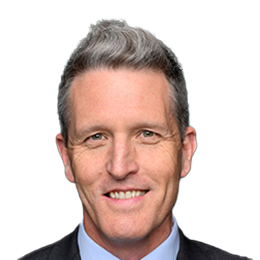
Interview with Ezra Kaye, ABC South West (WA)
STAN SHAW (HOST): We're getting an offshore wind farm up and running in WA. It does still seem like it's a bit of a world away, but there has been some recent progress. The federal government has announced three proposed offshore wind projects off the coast of Bunbury, and they've announced that those ones have been offered preliminary feasibility licenses. In a media release yesterday, the federal government said the three projects could generate a total of four gigawatts, enough to power around 2.7 million homes and potentially employ over two and a half thousand workers during construction and another 1000 ongoing jobs. The licenses will enable Traditional Owners time to consider the impacts of the projects before they are offered the final feasibility license, with the federal government hailing it as an important next step in building a large scale offshore wind industry in WA. ABC South West reporter, Ezra Kaye, spoke with Assistant Minister for Climate Change and Energy, Josh Wilson, to find out exactly what a preliminary feasibility license actually is.
JOSH WILSON: Well, a preliminary feasibility license means that the proponents of these projects can undertake some further work – including engagement with First Nations communities – before getting onto the preparatory bits that will be part of these kinds of projects: the development of management plans, environmental approvals, and other kinds of consultation.
So, it is early days. We know that we're not going to see offshore wind up and running in the next few years. This is for something a little bit further down the track, but because the task before us as we make this clean energy transition requires us to keep delivering new energy generation – both because we're using more energy, and because we've got old sources of power, particularly coal fired power, coming out of the system.
EZRA KAYE (REPORTER): You said Traditional Owners will now have time to consider the impacts of the projects. What are they looking at? What will they consider?
WILSON: Well, that will be for the First Nations groups to drive as far as the considerations. This will now allow the proponents to engage directly with local Traditional Owners in order to be sure that the projects meet their interests, and are mindful of their concerns and their cultural heritage.
KAYE: Are you aware of the backlash in the local community against this project? There’s a lot of people upset about it, who've been protesting, and I think the local council even put a formal motion in.
WILSON: Look, I'm from Freo, but I actually went to primary school in Margaret River a long time ago. I spent time in the South West, and it's a beautiful community.
It's understandable that any change comes with interest and comes with concern. It's legitimate that people are concerned about our ocean environment. Again, through the proper process that saw the delivery of the zone boundaries, there were changes – both with respect to some interest from recreational fishing, and with respect to some environmental matters, including the sort of the transit of whale through that bit of ocean.
But the evidence is clear around the world that you can deploy offshore wind – which, in the great vast scheme of the ocean occupies very little space – and it can be introduced in a way that that is in keeping with environmental protection and recreational and commercial fisheries.
KAYE: So where do we go now with it? What's the next steps?
WILSON: Well, the preliminary feasibility licenses give the proponents the green light to get on with those next steps. As I said, it is early days. But every step along the way takes us closer to the opportunity to see those projects become real, and to benefit from the clean, cheap, emission-free energy that they produce.
